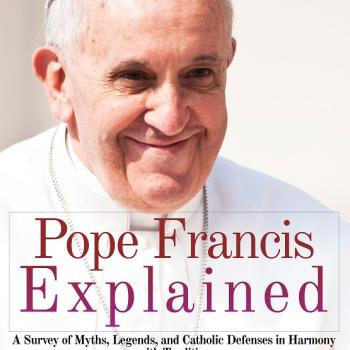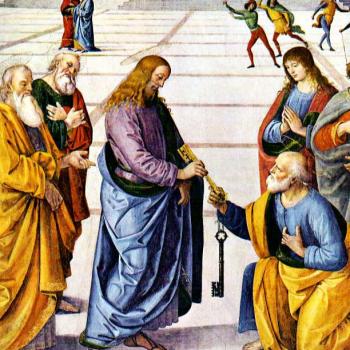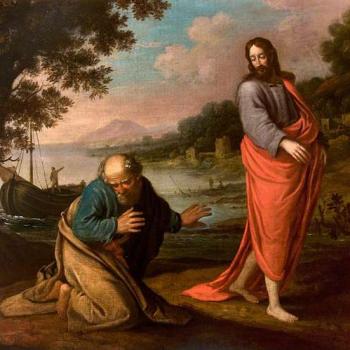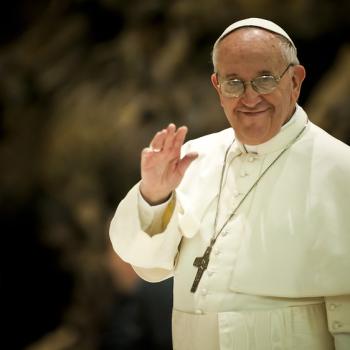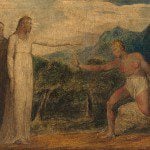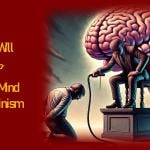Unwillingness to Make Even Rudimentary Efforts to Consult Context or to Understand a Pope’s Overall Thinking
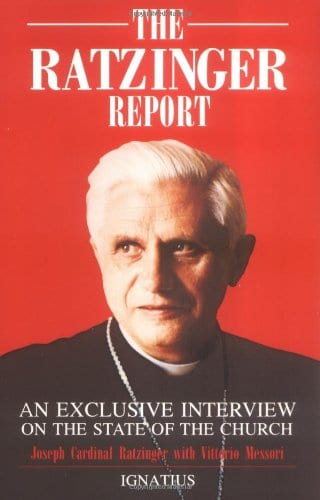
Shortly I will document how truly outrageous and absolutely groundless this flat-out lying about Pope Benedict XVI is. But I’d like to note at the outset, how this confirms several of the elements regarding radical Catholic reactionaries, that I have been pointing out for many years now:
1) Part and parcel of the reactionary mindset and mentality is antipathy towards Vatican II.
2) The hostility towards popes preceded, and extends far beyond Pope Francis. I’ve documented this over and over. Here we see once again that the reactionaries will trash and slander Pope Benedict XVI: whom they used to consider their hero, darling, and champion. But since he dared to not implement their agenda in toto, had the gall to resign, and (above all) to not condemn and trash his successor (quite the contrary), they have thrown him out into the garbage, and it’s now open season: as evidenced by this very calumny. And this is also true of Pope St. John XXIII, Pope St. Paul VI, and Pope St. John Paul II: all of whom committed the “unpardonable sin” of being advocates of Vatican II. If one points out that they are saints, then the reactionaries will simply attack the validity of their canonizations.
3) I’ve often noted how reactionaries think like both Protestants and Catholic dissidents / liberals. Most prominently is the “either/or” mindset. For the reactionary, Vatican II simply can’t be regarded as in “continuity” with tradition (Pope Benedict’s own constant emphasis). It has to be seen as “revolutionary” or in “rupture” with that tradition. Because Pope Benedict’s view is the polar opposite of that, he had to be discarded. It was inevitable. At first it was reluctant, and with mixed feelings, but now it’s all-out war.
4) Reactionaries (as is utterly obvious by now) seem to be almost constitutionally unable to fairly represent their theological opponents. If one must lie about opponents and misrepresent their thinking (create straw men to war against), and the facts of the matter, in order to bolster their own opinions, then the latter must not be worth very much. This exhibits (perhaps surprisingly, but truly) a marked lack of self-confidence.
5) As I’ve been noting in several recent articles, Abp. Viganò has become increasingly unbalanced, irrational, unhinged, and conspiratorial. The present instance is yet more evidence of that. His credibility is virtually zero at this point, in my opinion.
The current farce and fiasco occurs in the pages of the good ol’ reactionary rag The Remnant, in the article, “Archbishop Viganò: On Vatican II & Bishop Barron’s Word on Fire” (Michael J. Matt, 8-15-20). Matt temporarily exhibits a rare ecumenical, irenic attitude as regards Bishop Barron: “I have benefited from some of his lectures in the past and do not wish to call into question his sincerity.” That’s more than a former pope gets from Abp. Viganò. Then Matt goes after a recent initiative by Bishop Barron to defend Vatican II:
[I]t does strike me as a not-so-veiled attempt to disqualify (if not vilify) traditional Catholic resistance to the disastrous and non-binding novelties of the Second Vatican Council.
Matt then decided to write to the illustrious archbishop for his thoughts. Words of Abp. Viganò below will be in blue.
I will focus . . . on the introductory passage from Benedict XVI:
To defend the true tradition of the Church today means to defend the Council. […] We must remain faithful to the today of the Church, not the yesterday or tomorrow. And this today of the Church is the documents of Vatican II, without reservations that amputate them and without arbitrariness that distorts them.”
The Holy Father states apodictically that “to defend the true tradition of the Church today means to defend the Council” and that “we must remain faithful to the today of the Church.” These two propositions, which complement one another, find no support in the Tradition, since the Church’s present is always indissolubly linked to her past.
. . . there is no Church only of today, in which yesterday is now irremediably past and tomorrow has not yet happened: what Christ taught yesterday, we repeat today and His Vicars will profess tomorrow; what the Martyrs witnessed to yesterday, we guard today and our children will confess tomorrow.
Then there is another proposition that “we must remain faithful to the today of the Church, not the yesterday or tomorrow,” which significantly was adopted by the proponents of Vatican II precisely in order to erase the past, affirm the conciliar revolution in the today of that time, and prepare the crisis of that tomorrow in which we now find ourselves. And the Innovators who wanted that Council, carried it out precisely with “the reservations that amputated” the uninterrupted Magisterium of the Church and “the arbitrariness that distorted it” — paraphrasing Ratzinger’s words.
I do not see why what the Innovators accomplished with Vatican II yesterday, to the detriment of Tradition, cannot apply to them today: those who, in the name of being pastoral, did not hesitate to demolish the doctrinal, moral, liturgical, spiritual and disciplinary edifice of the old religion – as they call it – in the name of the Council, today would dare to claim for their daring innovations, that obsequious submission and that defence that they did not want to apply to two thousand years of infallible Magisterium. And we are to show unconditional support not for Tradition, but for the only event that has contradicted and adulterated that Tradition. It seems to me that this line of reasoning, if only from a purely logical point of view, doesn’t have much credibility, and limits itself to reaffirming that self-referentiality of the conciliar church, in rupture with the uninterrupted teaching of the Supreme Pontiffs who preceded it.
Moreover, it seems to me that Benedict XVI’s quotation is also in contradiction with that hermeneutic of continuity, according to which the Council should be accepted not as a rupture with the Church’s past, but precisely in continuity with it: but if there is no Church of yesterday, to what does the continuity of the supposed conciliar hermeneutic refer? . . .
[U]nfortunately, defending Vatican II is more important than defending the perennial depositum fidei.
Do you see what he is attempting to do here? He wants to make out that Cardinal Ratzinger (this was a citation form his Ratzinger Report in 1985) thinks Vatican II was a more-or-less complete revolution, which did away with the prior existing tradition of the Church. Nothing could be further from the truth, and if Abp. Viganò (achieving the scholarly standards of a sharp sophomore in college) had simply read more context, he would see that. But instead, he would rather cynically second-guess a pope’s words, and give them a meaning that never crossed then Cardinal Ratzinger’s mind.
Bishop Barron, in the document under consideration, “Vatican II FAQs” already refuted this fallacious, defamatory interpretation (“8. Is Vatican II in continuity with tradition, or a rupture?”):
These terms originate in an address given by Pope Benedict XVI in 2005. In that speech, he contrasts two “hermeneutics,” or ways of interpreting, Vatican II. On the one hand is “the hermeneutic of discontinuity or rupture,” the idea that Vatican II is a split or break with Catholic tradition. On the other hand is “the hermeneutic of reform,” or continuity, the idea that Vatican II is consistent with Catholic tradition.
Both those on the extreme “left” and the extreme “right” have interpreted Vatican II as a rupture—a good rupture and a bad rupture, respectively.
But Pope Benedict XVI championed the hermeneutic of continuity, saying: “The Church, both before and after the Council, was and is the same Church, one, holy, catholic and apostolic, journeying on through time.” Vatican II was not a break or rupture; it must be interpreted in continuity with the tradition that came before.
I have myself, highlighted for many years now, Cardinal Ratzinger’s 1985 statement (The Ratzinger Report, San Francisco: Ignatius, 1985, 28-29, 31) that Vatican II has precisely the same authority as the Council of Trent. The Ratzinger quotation above was part of my larger citation. One Rod Halvorsen, in the combox of Matt’s article, ran across my citation, which I pasted into another article of mine, where I was defending Vatican II against reactionary Paolo Pasqualucci. Here is the quotation. Readers can readily see that the future Pope Benedict XVI was not running down sacred tradition in the slightest (my bolding added):
It must be stated that Vatican II is upheld by the same authority as Vatican I and the Council of Trent, namely, the Pope and the College of Bishops in communion with him, and that also with regard to its contents, Vatican II is in the strictest continuity with both previous councils and incorporates their texts word for word in decisive points . . .
Whoever accepts Vatican II, as it has clearly expressed and understood itself, at the same time accepts the whole binding tradition of the Catholic Church, particularly also the two previous councils . . . It is likewise impossible to decide in favor of Trent and Vatican I but against Vatican II. Whoever denies Vatican II denies the authority that upholds the other two councils and thereby detaches them from their foundation. And this applies to the so-called ‘traditionalism,’ also in its extreme forms. Every partisan choice destroys the whole (the very history of the Church) which can exist only as an indivisible unity.
To defend the true tradition of the Church today means to defend the Council. It is our fault if we have at times provided a pretext (to the ‘right’ and ‘left’ alike) to view Vatican II as a ‘break’ and an abandonment of the tradition. There is, instead, a continuity that allows neither a return to the past nor a flight forward, neither anachronistic longings nor unjustified impatience. We must remain faithful to the today of the Church, not the yesterday or tomorrow. And this today of the Church is the documents of Vatican II, without reservations that amputate them and without arbitrariness that distorts them . . .
I see no future for a position that, out of principle, stubbornly renounces Vatican II. In fact in itself it is an illogical position. The point of departure for this tendency is, in fact, the strictest fidelity to the teaching particularly of Pius IX and Pius X and, still more fundamentally, of Vatican I and its definition of papal primacy. But why only popes up to Pius XII and not beyond? Is perhaps obedience to the Holy See divisible according to years or according to the nearness of a teaching to one’s own already-established convictions?
Pope Benedict is — far from being an opponent — in fact, an enthusiastic, zealous defender and upholder of the sacred tradition of the Catholic Church. No one who reads the above could possibly deny that. Many other similar statements could easily be produced to bolster these. But it is an insult to my intelligence and that of every orthodox Catholic to even consider doing such a thing. The above is sufficient to nail down the point.
But Abp. Viganò prefers to do what every heretic and Catholic dissident and (well-meaning but mistaken) Protestant does to Holy Scripture: he yanks one statement out of context that only appears at first glance to support his own prior position; then ignores all context and all other related thoughts. This is unconscionable, and in fact is the mortal sin of bearing false witness against another: in this instance, a pope.
Abp. Viganò also scathingly condemned Vatican II in a letter published on 8-10-20 in The Remnant:
If it is possible for this Pope to be “for all practical purposes schismatic” – and I would say also heretical – why could not that Council also have been so, despite the fact that both one and the other were instituted by Our Lord to confirm the brethren in Faith and Morals? I ask you, what prevents the Acts of Vatican II from deviating from the path of Tradition, when the Supreme Pastor himself can deny the teaching of his Predecessors? And if the persona Papae is in schism with the papacy, why could a council that wanted to be pastoral and abstained from promulgating dogmas not be able to contradict the other canonical councils, entering into a de facto schism with the Catholic Magisterium?
It’s true that this situation is a hapax, a case that in itself has never been seen in the history of the Church; but if this applies to the papacy – in a crescendo from Roncalli to Bergoglio [see how it is all popes since Pius XII?] – I do not see why it could not apply for Vatican II, which precisely thanks to the recent popes has set itself as an event in itself, and as such has been used by its proponents? . . .
Vatican II is both an ecumenical council and a “devil council” [conciliabolo], it retains the appearance of being a single Council, when in reality there are two. And I would add: one council was legitimate and orthodox and was aborted from birth with the subversion of the preparatory schemes, and one council was illegitimate and heretical (or at least favens haeresim) and is the one to which all of the Innovators refer, including Bergoglio, in order to legitimize their doctrinal, moral and liturgical deviations. . . .
[T]he “container-council” was used to give apparent authority to a deliberately subversive event, exactly as today, right before our eyes, the Vicar of Christ is used to give apparent authoritativeness to a deliberately subversive operation. In both cases, the innate sense of respect towards the Church of Christ on the part of the faithful and the clergy is being used as an infernal stratagem – a Trojan horse introduced into the Sacred Citadel – in order to dissuade every form of dutiful dissent, every criticism, every legitimate denunciation.
This outlook is also manifestly hypocritical and pharisaical. Abp. Viganò and his fellow reactionaries falsely accuse Pope Benedict XVI and non-reactionary orthodox Catholics of supposedly thumbing our collective noses at all sacred tradition prior to Vatican II; in other words, of espousing one period of Catholic tradition and doctrinal development and ignoring another time period.
But in fact, this is mere projection of exactly their own error: they reject and ignore the recent period of Catholic doctrinal development (Vatican II and the popes of the last 60-odd years), while accepting past development: as if the Holy Spirit decided in 1958 to no longer guide the Catholic Church and protect her from doctrinal error (and that is precisely the error of the Pharisees in Jesus’ time). This is absurd, and what Pope Benedict in particular has vigorously opposed.
Shame on him. And shame all the more on all those who continue to uphold Abp. Viganò as some kind of reactionary champion or hero, because he attacks popes, Vatican II, the ordinary form Mass, and ecumenism (all four classic marks of the reactionary).
But Abp. Viganò was not always of this mind. Sometime in the last seven years he underwent a radical change of mind. He had — apparently — gotten hold of the material of the usual reactionary suspects and started being influenced by them. We are what we eat. On 11 November 2013 in an address to the USCCB Fall General Assembly in Baltimore, he unreservedly sung the praises of Pope Francis:
Certainly, my brothers, no one can dispute the clear fact that our present Holy Father himself, as the Supreme Teacher, is giving us by, his own witness, an example of how to live a life attuned to the values of the Gospel. While each of us must take into consideration our adaptability to the many different circumstances and cultures in which we live and the people whom we serve, there has to be a noticeable life style characterized by simplicity and holiness of life. This is a sure way to bring our people to an awareness of the truth of our message.
He was also almost ecstatic in his praise of Vatican II, and the three pope-saints: John XXIII, Paul VI, and John Paul II:
All of us who have been called to the ministry of bishop by Pope John Paul II, and many who have been ordained by him, are looking forward to his canonization, as well as the canonization of Pope John XXIII this coming April.
There was already, by that time, plenty of criticism towards Pope Francis from the reactionaries, but Viganò seemed completely immune to it or unaware of it. My book in defense of Pope Francis was published just two months later, and it dealt with nine different trumped-up controversies in as many chapters. In July 2013, for example occurred the thoroughly distorted and unjust accusations regarding homosexuality and Pope Francis saying (taken wildly out of context, of course), “who am I to judge?” This was what helped turn Phil Lawler and Patrick Coffin against the pope, and to become pope-bashers.
Almost exactly a year later, in another address to the same assembly, Abp. Viganò was still an avid fan of Francis and the other “conciliar” popes:
Indeed, this is the year of the three popes, marked by the recent beatification of Blessed Paul VI and previously the dual canonizations of St. John XXIII and St. John Paul II. We who had the privilege of knowing them recognize how inspiring their lives were for our vocation and for our ministry. . . .
The morning after his election as pope, our Holy Father Francis, in speaking to the Cardinals, said: “Build up the Church, the Bride of Christ, the cornerstone of which is the same Lord. With every movement in our lives, let us build!” His vision is obviously one of renewal. Perhaps in ways to which we are not accustomed…not just holding on to conventional modes of evangelization, but primarily by evangelizing through a ministry of personal conversion, forgiveness, compassion and healing.
And again in November 2015 to the same gathering of bishops, Abp. Viganò (back when he still thought and spoke like an obedient, orthodox Catholic) highly praised Pope Francis:
All of us here are still amazed at the incredible recent visit of our Holy Father in the United States. . . .
On every occasion when he spoke, His Holiness gave a significant message that left a deep impression on the minds and hearts of his listeners.
Note that Abp. Viganò has claimed that he had informed Pope Francis “in 2013 about McCarrick’s alleged sexual misconduct with priests and seminarians.” This was the ostensible reason he became disenchanted with him. Yet the address cited above in 2013 probably occurred after this confrontation, and the 2014 and 2015 addresses certainly did. What gives? Something just ain’t right there; something doesn’t add up. Something very significant and tragic happened since that time.
But in any event, the wisdom of Pope Francis in ignoring this man’s constant (Satan-like) false accusations is manifest all the more every day. I think he knew he would self-destruct and implode over time, as the fanatical, hysterical, conspiratorial reactionary that he turned out to be. And indeed, it is happening right before our eyes. The pope simply understood his glaring, serious faults before all of us, who have seen them gradually unfolding in his ever more ludicrous, ridiculous “statements”: issued — paranoid — from some secluded, unknown basement (perhaps in Michael Matt’s house, for all we know).
Revelation 21:8 (RSV) But as for the cowardly, the faithless, the polluted, as for murderers, fornicators, sorcerers, idolaters, and all liars, their lot shall be in the lake that burns with fire and sulphur, which is the second death.”
***
Photo credit: book cover image from Amazon page for the book.
***




